

The Vermont Socialist - GMDSA newsletter (10/31/25): A nightmare on the brains of the living

Happy Halloween, socialists! Have fun out there tonight, and if you're dressed up as a zombie, remember only to eat the rich.
Soon enough, it'll be back to business: for the next couple weeks, we'll be getting ready for our annual chapter convention on Sunday, Nov. 16, at the Old Labor Hall (46 Granite St.) in Barre. There, we'll elect new officers and set priorities for 2026.
No event plays a bigger role in shaping the direction of our chapter's work. We need your attendance!
And if you're a member, you still have time to declare your candidacy for an officer position or to submit a resolution or bylaws amendment. We'd like to receive proposals by Nov. 3 in order to give ourselves time to put together a convention bulletin.
RSVP here. We'll start with a potluck at 11 a.m. Carpools will be available. See our flyer and a couple photos from last year below.


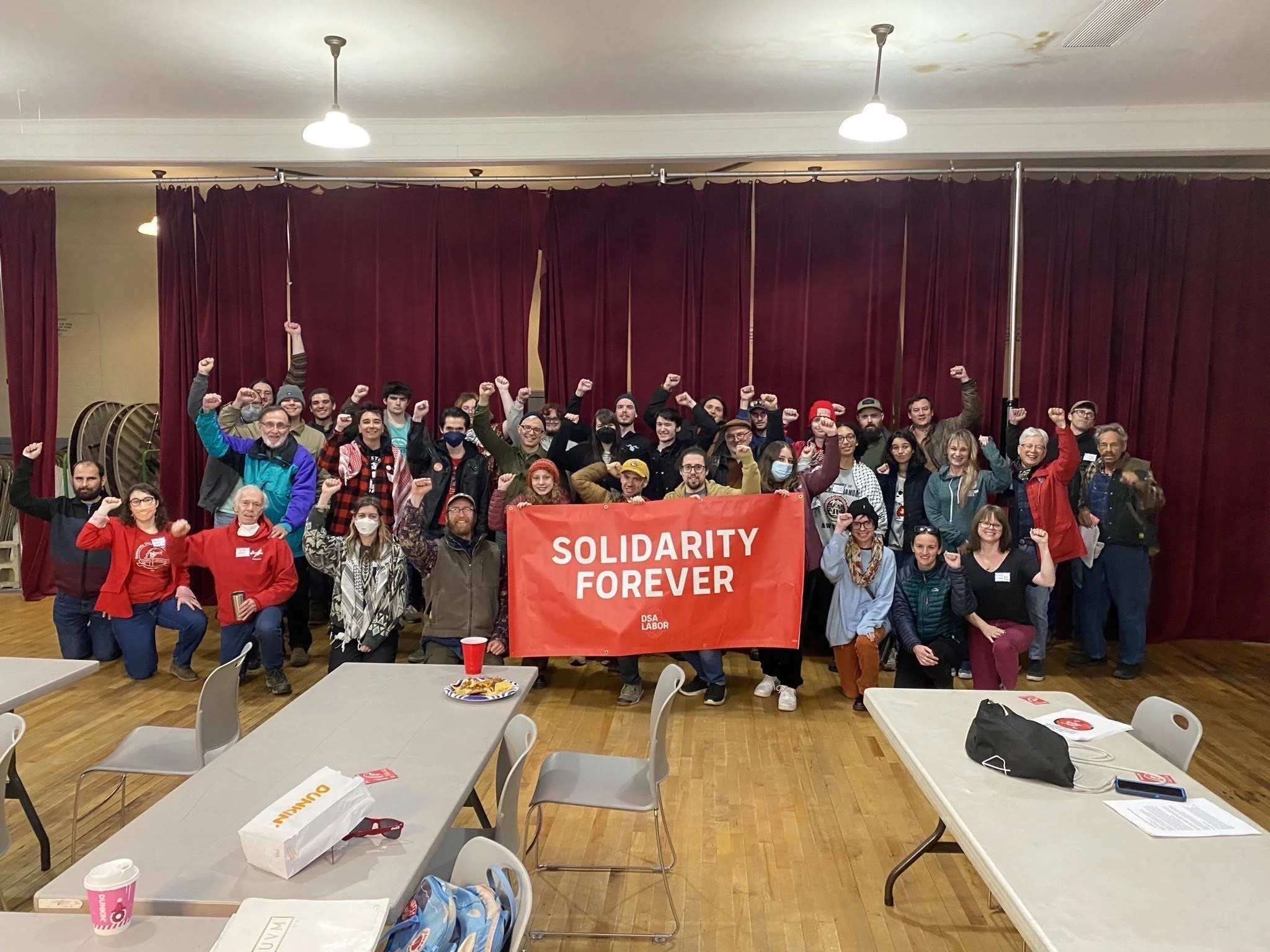
Meanwhile, those of you who live in Burlington may have heard that GMDSA member Marek Broderick has announced his bid for reelection as Ward 8's city councilor. If you missed the launch party last week at Folino's Pizza, you can learn more about Marek's campaign on his website.
Below, you'll find a smaller-than-usual calendar of GMDSA committee meetings. That's because all of our committees must be reauthorized annually at the chapter convention: after Nov. 16, we technically don't know which committees will or won't exist.
If you want to create a new one, you can do so by submitting a resolution. You can email us here if you need any help writing one or have any other questions about the convention. See you on Nov. 16!
GMDSA MEETINGS & EVENTS
🚲 Our Urbanism Committee will meet on Monday, Nov. 3, at 6 p.m. on Zoom.
🧑🏭 The next meeting of our Labor Committee will take place on Monday, Nov. 10, at 6 p.m. on Zoom.
🔨 Talk about your job and learn about shop-floor organizing from peers at Workers' Circle (co-hosted by the Green Mountain IWW) on the second and fourth Wednesdays of each month, including Nov. 12, at 6 p.m. at Migrant Justice (179 S. Winooski Ave., Burlington).
‼️ Again, our annual chapter convention will take place on Sunday, Nov. 16, at Barre's Old Labor Hall (46 Granite St.) at 11 a.m.
STATE AND LOCAL NEWS
📰 Burlington band Marxist Jargon has released a new album, to each according to their needs.
📰 The Vermont State Employees' Association staged a demonstration in Waterbury against Gov. Scott, who has ordered the state's remote workers to return to the office by Dec. 1.
COMMUNITY FLYERS


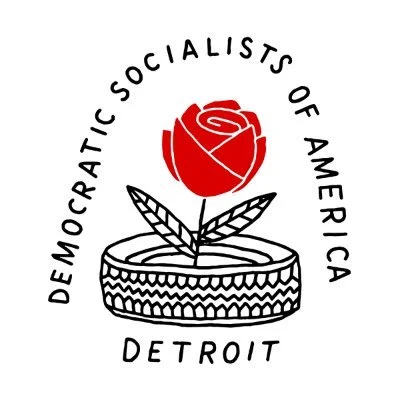

Zohran Won While Leaning into Socialism, Not Downplaying It
By: Jane Slaughter

This article represents the opinion of the author and does not necessarily represent the views of The Detroit Socialist or Metro Detroit DSA as a whole.
A hot take on Zohran Mamdani’s win: Zohran won while leaning into socialism, not downplaying it.
Partly this wasn’t his choice: the media picked up on his DSA membership and hammered him with it. But over the course of the campaign, Zohran actually became more outspoken about being a democratic socialist as he went along, far more than just having the DSA logo on his literature.
Does this mean that the million New Yorkers who voted for Zohran are all pro-socialist? No, but it does mean that they weren’t scared off by Zohran’s allegiance to socialism — and that they appreciated his honesty and forthrightness, his refusal to back off and start using weasel words.
“I am young. I am Muslim. I am a democratic socialist. And most damning of all, I refuse to apologize for any of this,” he said in his victory speech.
That’s similar to Bernie in 2016 and 2020. Bernie’s version of socialism often seemed to be synonymous with the New Deal (so, not actually getting rid of capitalism) — but people appreciated his consistency over the years and, again, his refusal to let the red-baiters back him off.
Around the country, DSA often backs candidates who are kind of progressive but don’t openly identify as socialists. We call their campaigns “socialist” because we’re supporting them, but their platforms aren’t distinguishable from any good-government pol–certainly not rising to the level of the life-changing planks of Zohran’s platform. (Imagine what it would mean for an average family to suddenly be able to get free childcare! To have their rent frozen! To get to work reliably on time! It’s still capitalism, but it does inspire ordinary people to think they matter.)
For me, Zohran’s win means we can be bolder in our electoral runs. We don’t have to hide our socialist light under a bushel. We can lift our constituents’ aspirations higher.
Zohran didn’t talk about the “middle class.” He talked to the working class.
BUILD IT FOREVER
Another crucial point about the campaign (and there are many) is that Zohran explicitly asked his army of volunteers not to just go home and rest after Election Day. “This is part of a lifelong struggle,” he told his volunteers. “Not an electoral one. You have joined a movement for the rest of your life. Now, however you want to be a part of that movement is your decision, just as long as you continue to be a part of it.”
That will be the hard part–convincing tens of thousands of people that they have a part to play in winning the Zohran agenda, and finding meaningful ways for all those people to participate now that the canvassing is done. Not him, us!
Several New York DSAers have floated ideas for how that could happen:
“Rather than disbanding his massive volunteer machine after November 4 — as is the norm in electoral operations — Zohran’s team could transition it into a broader organizing apparatus to help secure his agenda under the banner of a broad new campaign, something like a Movement for an Affordable New York (MANY).” — Eric Blanc, Wen Zhuang and Emily Lemmerman
“We propose the formation of a proto-party like what Mayor Bernie Sanders built in Burlington — a place where tens of thousands of volunteers can go to keep organizing beyond the November election.” — Jeremy Gong and Oren Schweitzer
“A group of unions and community organizations came together to form a citywide alliance called the People’s Majority Alliance — to be ready to go into the streets, to lobby the city council and state legislature, and to keep up the organizing we need to bring a bold agenda into being.” — Stephanie Luce
“This is a great moment to get serious about organizing thousands of workers who want a union and don’t have one.” — Brandon Mancilla
Some of their ideas are more exciting than others. We sure don’t want to replicate the tired formula of an NGO-driven “table” where the heads of nonprofits meet to speak on behalf of their supposed (unorganized) constituents. I hope and assume NYC DSA is aggressively recruiting those who volunteered on the campaign–and will invent creative campaigns both for them and for tens of thousands of other New Yorkers. I stand in awe of their audacity in beginning this campaign and their skill in growing it huge.
Finally, just a quote from Zohran Mamdani, who cited Eugene Debs in his victory speech: “The truth is as simple as it is nonnegotiable: we are all allowed freedom. Each one of us, the working people of this city, the taxi drivers, the line cooks, the nurses, all those seeking lives of grace, not greed — we all get to be free.”
Jane Slaughter is a member of Metro Detroit DSA and a retired Editor for Labor Notes.
Zohran Won While Leaning into Socialism, Not Downplaying It was originally published in The Detroit Socialist on Medium, where people are continuing the conversation by highlighting and responding to this story.
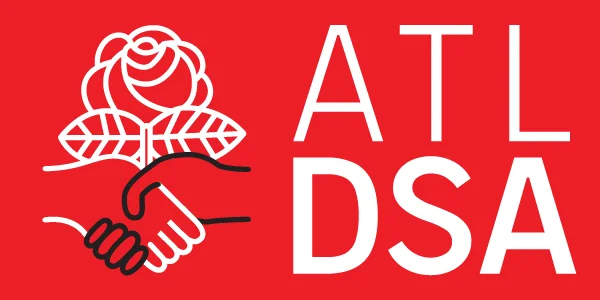

Statement on Kelsea Bond’s Electoral Victory
Democratic Socialist Kelsea Bond was just elected to the Atlanta City Council. Kelsea is a long-time DSA member and organizer. For many years, they have worked closely with local labor unions to expand workers’ rights on picket lines, at sip-ins and community meetings, in marches, and inside and outside of the State Capitol. They have canvassed for reproductive justice and advocated for the City to fund life-saving abortion care. They have fought to Stop Cop City and instead fund public services, build affordable housing, and expand mass transit. Our Chapter is immensely proud of their victory, as well as the work of the hundreds of volunteers and Atlanta DSA members who made this historic win possible.
For months, our members knocked doors and talked to District 2 residents about the issues that matter to working people — affordable housing, green public transit, and an economy for the 99%. The success that came from this massive effort proves that these bread-and-butter issues are broadly and deeply popular — even here in the deep south, even in a city whose government too often bends to corporate interests and the capitalist class.
This people-powered campaign was about standing up to billionaire commercial property owners who aren’t paying their fair share in taxes, and colluding landlords who are jacking up our rent year after year. It was about closing Atlanta’s wealth gap, which is one of the highest in the nation, by fighting for workers’ rights and a guaranteed living wage. It was about protecting the trans and immigrant members of our community, who are under attack by the fascist Trump administration and the Republican-controlled State government.
It was about building greener, more resilient city infrastructure that can withstand climate disaster and make Atlanta a more convenient and affordable place to call home. It was about ensuring that no Atlanta resident is without housing, healthcare, and a truly democratic say in how our city is run. We plan to continue our fight for working-class Atlantans alongside proud DSA member and Atlanta City Councilmember Kelsea Bond this spring, and we’re bringing the movement into City Hall with us.
Help us maintain our momentum and continue our work to make Atlanta more affordable, equitable, and safe for the 99%. This election is only the beginning. From here, we’ll continue relentlessly organizing to build a mass movement for working people.
Get involved today with Atlanta DSA to be a part of this fight, and win the socialist future workers deserve: atldsa.org/organize 
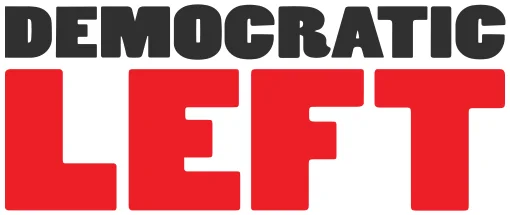

DSA Campaigns to Watch on Election Night
DSA-endorsed candidates will be competing for office across the country.
The post DSA Campaigns to Watch on Election Night appeared first on Democratic Left.


80,000 Members nationwide, Divestment Wins, Progress on Public Bank and More
Chapter & Verse: a Summary of Chapter News for October 2025
The post 80,000 Members nationwide, Divestment Wins, Progress on Public Bank and More appeared first on Democratic Left.


Solidarity Knows No Borders: DSA Builds Ties with MORENA through People-to-People Exchanges
Multiple exchanges between DSA and MORENA this fall has strengthen connections between the two organizations.
The post Solidarity Knows No Borders: DSA Builds Ties with MORENA through People-to-People Exchanges appeared first on Democratic Left.


How to organize your co-workers around AI
Management is already using the hype over AI to make workers fearful. We need a plan to get a say over the tools we use and how we use them.
The post How to organize your co-workers around AI appeared first on EWOC.
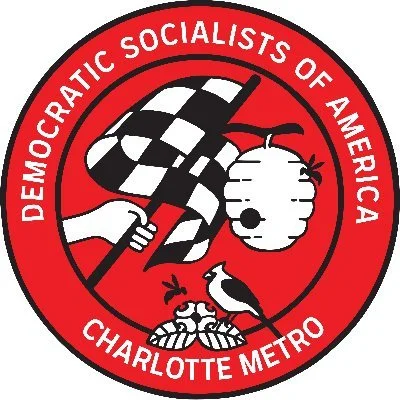

Vote Against the 2025 Mecklenburg County Sales Tax Referendum
Charlotte Metro DSA will not endorse the one-cent sales tax increase as we do not believe the framework created under the PAVE Act will adequately reflect the concerns of working families dependent upon public transit. As written, lower-income communities will face the highest cost burden given the regressive nature of sales taxes while Mecklenburg's capitalist class and political outsiders will be overly represented under the newly created 27-member Metropoitan Public Transit Authority (MPTA). Given this, we believe that any future projects will prioritize public transit not as a vehicle for connecting people but rather to enrich developers. In addition, the 60-40 allocation, 40% for roads, 40% for rail, and 20% for buses, intentionally divides communities by limiting where investment will go. Eastern Charlotte in particular loses out the most while North Charlotte will receive much of the immediate benefit under the planned Red Line. Charlotte Metro DSA believes that public transit investment should serve the working class without strings attached. The PAVE Act represents the deeply cynical nature of North Carolina state politics, in which politically-aligned business interests pollute legislation with obvious poison pills aimed at burdening workers and dividing communities.
Charlotte Metro DSA believes that public transit investment should serve the working class without strings attached. We are building a mass organization of the working class to fight and win key reforms like a fast and reliable mass public transit.
Sound good to you? Then join DSA Today!
In Solidarity,
Charlotte Metro DSA
You can view our Resolution from the 10/2025 General Meeting Here which authorized this post.
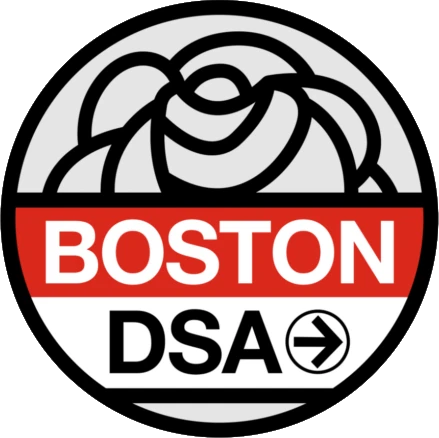

Health Care For the Homeless: Non-Clinical Staff Demand Fair Treatment in Bargaining with BHCHP

[[{“value”:”

SOUTH END, MA – Eighty people gathered outside of Boston Health Care for the Homeless’s (BHCHP) headquarters on Tuesday, October 28th after BHCHP Workers United, a subsidiary of 1199SEIU, sounded the alarm on stalling bargaining efforts and threatened cuts.
BHCHP is a community health center that provides medical care and specialized social work services for people experiencing homelessness. The union first won bargaining rights in March of 2024.
BHCHP emerged from a grant by the Robert Wood Johnson Foundation and the Commonwealth of Massachusetts with a clear mandate: provide medical care, continuity, and compassion for Boston’s unhoused population. In 1985, founding physician Dr. Jim O’Connell joined the staff, working from a van to meet individuals experiencing homelessness and connect them with medical services. Staff were driven by an urgent need to address the then-record number of people freezing to death on the streets. In 1987, BHCHP’s HIV team launched as a pilot program. Its success was so remarkable that it became a national template for HIV care units across the country during a time when the disease carried heavy stigma.
The organization will retain most of its clinical services, though management closed one respite care center in Jamaica Plain in early October. Cost-cutting included 25 layoffs, starting with the departments in BHCHP that do not provide direct medical care, but the workers who maintain key infrastructure to support and uplift those who utilize BHCHP services.
Remaining workers are faced with paltry insufficient increases and some with reduced benefits. A union worker shared with Working Mass that BHCHP was offering insultingly low yearly increases, cutting benefits in half for new employees, and raising healthcare premiums. These figures are lower than staff had received consistently for years, especially juxtaposed with the 10-13.5% raises offered to other, non-bargaining unit staff. Many of these roles pay $22/hour- simply not enough to meet the skills of the workforce nor the ballooning cost of living crisis in the Greater Boston area.
The union’s demands are not just for dignity and adequate compensation; they are demands for workers’ survival.
Organized Case Managers Speak Out
Despite the specialized, crucially important, and profoundly moral work the non-clinical staff at BHCHP provide; management has determined that Boston’s unhoused would be better served with those funds for wages and benefits redirected elsewhere.
The afflicted workers are crucial boots on the ground support for Boston’s most vulnerable. Case managers and recovery workers assist patients navigating a mind-numbingly obtuse and confusing patchwork of social safety net programs, including sober houses, MassHealth, and rehabilitation centers. So dedicated are these staff that many will leave their work cells on and pick up calls from patients 24/7.
Perhaps counter-intuitively, non-clinical staff provide crucial revenue-generating functions, making their mistreatment even more perplexing. Worker-organizer and case manager Astrid Mora spoke about the regarding and significant increase given to the agency’s caseload at previous rally in September:
Let’s be clear, if the nurses and providers generate revenue, it is our labor – our case management, our outreach, our advocacy – that links and retains patients in care and allows that revenue to generate.
One patient who spoke at that rally underscored the vital need served when they shouted:
I spend more time here than I do at home! And now what do I do? Where do I go? I’ll be back out here in the streets.
Organizers argue that the cuts were avoidable, predicated on financial predications, and Boston’s most at-risk people will surely suffer. Staff at BHCHP have consciously chosen to work with housing insecure populations because the mission matters, with most turning down more lucrative roles elsewhere. Yet even the most righteous workers are facing a financial breaking point. The burden of losing key staff will certainly fall onto the unhoused population who needs them.
Leslie, a BHCHP non-clinical staff worker, said:
Rents are going up, public service is going up, a lot of us are going to be homeless if we don’t get this raise…the company claims to care about the people and the patients that they serve – but how can you say you care about the people when you don’t recognize the workers that bring those people in?
BHCHP management, however, contends that the layoffs and minimal wage increases are necessary given the murky funding environment from federal healthcare cuts. These have led to what management calls “one of the most difficult financial periods in our 40+ year history.” According to management, offsetting those costs to impact the most vulnerable workers trying to make rent and groceries was a “painful decision.”
Bargaining committee member Pam Rivas disputes this:
During a supposed hiring freeze, new management positions have been created, existing managers have received promotions, and clinical staff have received above market rate adjustments. Meanwhile, we are told no funding is available for essential patient programs.
And meanwhile, the company has money for its other projects. The company hired an external consultant for evaluation in early 2025.

The President and New Management
Some of the problems with BHCHP are downstream of the risks policymakers run when they outsource social work, typically understood to be the responsibility of local government, to charities and non-profits. No steady funding leaves Boston’s unhoused subject to the whims of the free market, or in this case, broadsided by the arbitrary fiscal whims of the U.S. Congress.
BHCHP, like community health organizations and hospitals across the country, was asked to tighten belt loops after the passage of the One Big Beautiful Bill and respective cuts to Medicaid, grants, and other needed funding sources. Already reported are the over 300 rural hospitals set to close due to Medicaid cuts on funding that has been redirected to $50,000 sign-on bonuses with the U.S. secret police: Immigration and Customs Enforcement (ICE).
Management justified the layoffs by citing internal funding projections. Given that BHCHP has admitted to having funds to pay people for at least another year using their own analysis, the decision to lay off key staff now – particularly with limited notice, is an active choice.
Out of the past ten years of BHCHP tax filings, only one indicated that the charity was losing money. As Rivas said during the recent rally:
Management would like you to believe that they have no money and that we, as workers, should shoulder the burden of their poor financial and strategic direction. But this is not true. They have money…They keep saying we need to just weather this storm and survive. But I and many of my coworkers believe; it matters if we morally debase ourselves while weathering said storm.
BHCHP spent $1,455,376 on executive compensation in fiscal year 2024. With compensation this lucrative, the reason cuts are necessary becomes clear: meeting the material needs of the unhoused is big business.
Commonwealth residents may recall the closures for three hospitals in Massachusetts owned by Steward Health Care, a vampiric private equity-owned firm affiliated with the Healey administration, as identified by Working Mass reporting. Before joining BHCHP as CEO earlier this year, Stan McLaren was formerly President of Carney Hospital in Dorchester. Carney was the only hospital in the Dorchester area and served populations who otherwise had limited access to care.
Carney Hospital was closed by Steward Health after Steward went bankrupt in August of 2024. This certainly cannot be blamed on McLaren, but it does demonstrate the private equity-friendly background with which he joined BHCHP. What McLaren can be blamed for, however, are the numerous Unfair Labor Practices (ULP) filed by Carney’s Massachusetts Nurses Association (MNA) local.
Mayor Michelle Wu appointed McLaren to be on Boston’s Board of Health in March.

When Non-Profits Act Like For-Profits
This mindset appears to have translated to the new management of BHCHP. They undoubtedly face financial headwinds – as do their workers. Management may have forgotten that BHCHP’s IRS designation is as a charity, not a for-profit machine that must cut costs and maximize shareholder value, with a requisite responsibility. Each worker facing cuts provides invaluable labor that not only sustains them as workers through an economy beset by misery, but provides essential and already-underfunded healthcare services to those experiencing homelessness.
The layoffs at BHCHP are especially ironic given the incessant emphasis on public safety within the broader mainstream discourse in Boston, particularly around sites like Mass and Cass and Davis Square, where the state has waged its own one-sided class war on homeless people. The suffering of the unhoused as a component of the homelessness epidemic, driven in part by private equity firms purchasing single family homes and apartment buildings, the lack of democratic control of the housing stock by tenants, and insufficient investment in solutions for the housing insecure by state and local policy makers. These crises are set only to worsen as a result of BHCHP’s cuts.
BHCHP non-clinical workers are not the only non-medical staff suffering under executives using cuts to attack the stability of their jobs in the Greater Boston area. Other hospitals and medical institutions reportedly face similar conditions. While BHCHP is a union shop, there are even fewer protections at large medical facilities where non-clinical staff are not as organized to fight back for both their coworkers and patients.
According to 1199SEIU speakers at the rally, organizing is working. Since a previous rally in September, management conceded to providing severance packages for laid-off workers – direct evidence that when workers fight, they win, and why continuing the public pressure campaign on BHCHP is critical for these workers.
BHCHP is one of the most directly impactful organizations in Boston today for the most materially-oppressed tenants: the unhoused. This impact is due to the labor of its worker-organizers in non-clinical roles. Allies of the afflicted BHCHP staff should follow 1199SEIU communications for future rallies oon their Instagram.
Chris Brady is a public sector unionist and a member of the Working Mass Editorial Board.
The post Health Care For the Homeless: Non-Clinical Staff Demand Fair Treatment in Bargaining with BHCHP appeared first on Working Mass.
“}]]

